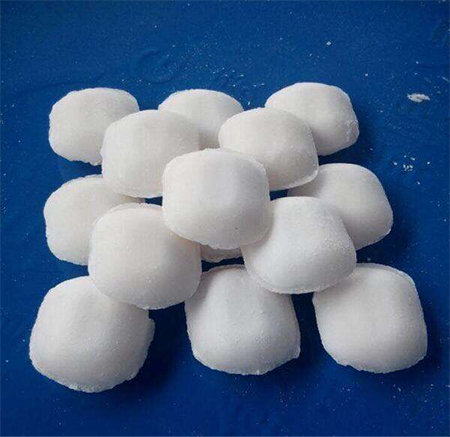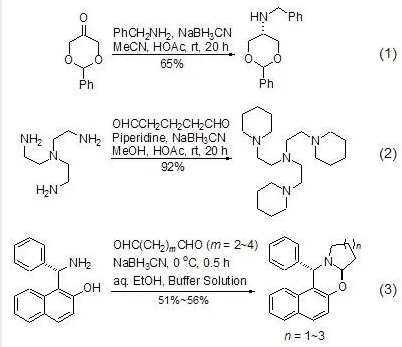Sinoright Blog
Sodium Cyanide formula: NaCN

Agent Characteristics
APPEARANCE: White crystalline or granular powder.DESCRIPTION: Sodium cyanide releases hydrogen cyanide gas, a highly toxic chemical asphyxiant that interferes with the body’s ability to use oxygen. Exposure to sodium cyanide can be rapidly fatal. It has whole-body (systemic) effects, particularly affecting those organ systems most sensitive to low oxygen levels: the central nervous system (brain), the cardiovascular system (heart and blood vessels), and the pulmonary system (lungs). Sodium cyanide is used commercially for fumigation, electroplating, extracting gold and silver from ores, and chemical manufacturing. Hydrogen cyanide gas released by sodium cyanide has a distinctive bitter almond odor (others describe a musty “old sneakers smell”), but a large proportion of people cannot detect it; the odor does not provide adequate warning of hazardous concentrations. Sodium cyanide is odorless when dry. Sodium cyanide is shipped as pellets or briquettes. It absorbs water from air (is hygroscopic or deliquescent).
METHODS OF DISSEMINATION:
Indoor Air: Sodium cyanide can be released into indoor air as fine droplets, liquid spray (aerosol), or fine particles.Water: Sodium cyanide can be used to contaminate water.
Food: Sodium cyanide can be used to contaminate food.
Outdoor Air: Sodium cyanide can be released into outdoor air as fine droplets, liquid spray (aerosol), or fine particles.
Agricultural: If sodium cyanide is released as fine droplets, liquid spray (aerosol), or fine particles, it has the potential to contaminate agricultural products.
ROUTES OF EXPOSURE: Sodium cyanide can affect the body through ingestion, inhalation, skin contact, or eye contact.
The Origin of Sodium Cyanide
Cyanide is a naturally occurring chemical, found in many plants, that has been used in conventional warfare and poisoning for 2 millennia. It is highly lethal, whether inhaled as a gas, ingested in solid form, or absorbed through topical exposure. Two notorious incidents in recent history-the Jonestown Massacre in 1978 and the Tylenol poisonings in 1982-highlight the lethality of this poison.First isolated in 1782, cyanide is a compound composed of carbon triple bonded to nitrogen (CN). Carl Wilhelm Scheele, of Sweden, first discovered sodium cyanide in 1782 while preparing Prussian Blue dye.Cyanide can be released from natural sources, including some foods, and it is contained in several industrial chemicals and in cigarette smoke. It is also used in manufacturing and in pesticides. In medicine, cyanide can be found in the widely used anti-hypertensive, sodium nitroprusside, each molecule of which contains 5 molecules of cyanide. The most common cause of cyanide poisoning is smoke inhalation in fires.
Non-Traditional Uses of Sodium Cyanide
Non-traditional uses of sodium cyanide are employed for sterilization, control of nuisance vegetation, and elimination of predators of fry (juvenile fish). Moreover, NaCN is an agent used in sheep’s collars as a coyote deterrent.Industrial Sodium Cyanide Uses
Common applications of sodium cyanide include its use in: fumigation; the refinement of gold, silver, zinc, and lead; dye production; steel hardening; coal gasification; a source of hydrogen cyanide.
Case Hardening with Sodium Cyanide
Case hardening with sodium cyanide is performed by means of liquid carburizing. The immersion solution in which steel to be hardened consists of is an even divide of sodium cyanide and sodium carbonate. The implementation of sodium carbonate [order online here] decreases the rate at which cyanide disintegrates at operation temperature (between 900-950° C). During carburization one of two chemical reactions are expressed:2NaCN + 2O2 =======> 2Na2CO3 + CO + 2N
2NaCN + O2 =======> 2NaCNO (Sodium Cyanate)
3NaCNO =========> NaCN + Na2CO3 + C + 2N

Electroplating & Metal Plating with Sodium Cyanide
Electrodeposition is the process of dissolving metal cations and creating a fine metal surface on an electrode. Sodium cyanide is commonplace in electrodeposition during the treatment of automotive workings. The resulting chemical reactions ensure automobiles are guarded against corrosion; durability is also augmented.Gold & Silver Extraction (Gold Cyanidation)
Gold cyanidation is the methodology in which gold is extracted from ore; cyanidation is achieved through the Eksner Equation:4 Au(s) + 8 NaCN(aq) + O2(g) + 2H2O(l)→ 4 Na[Au(CN)2](aq) + 4 NaOH(aq)
Sodium cyanide plays a key role in extraction and boasts itself among the most commonplace and versatile leaching modality.
